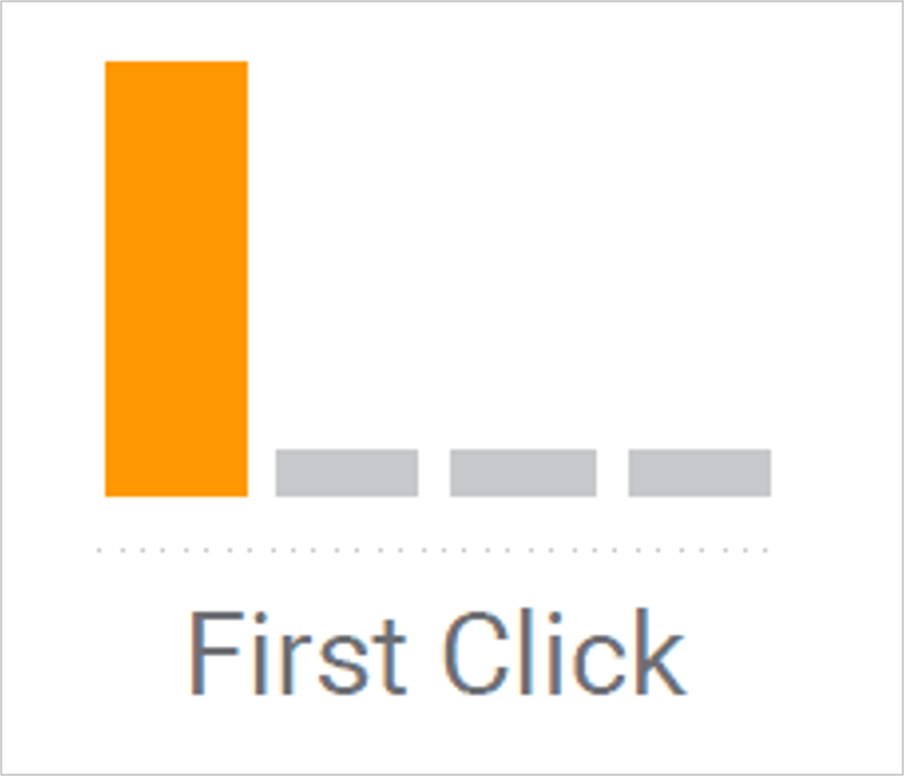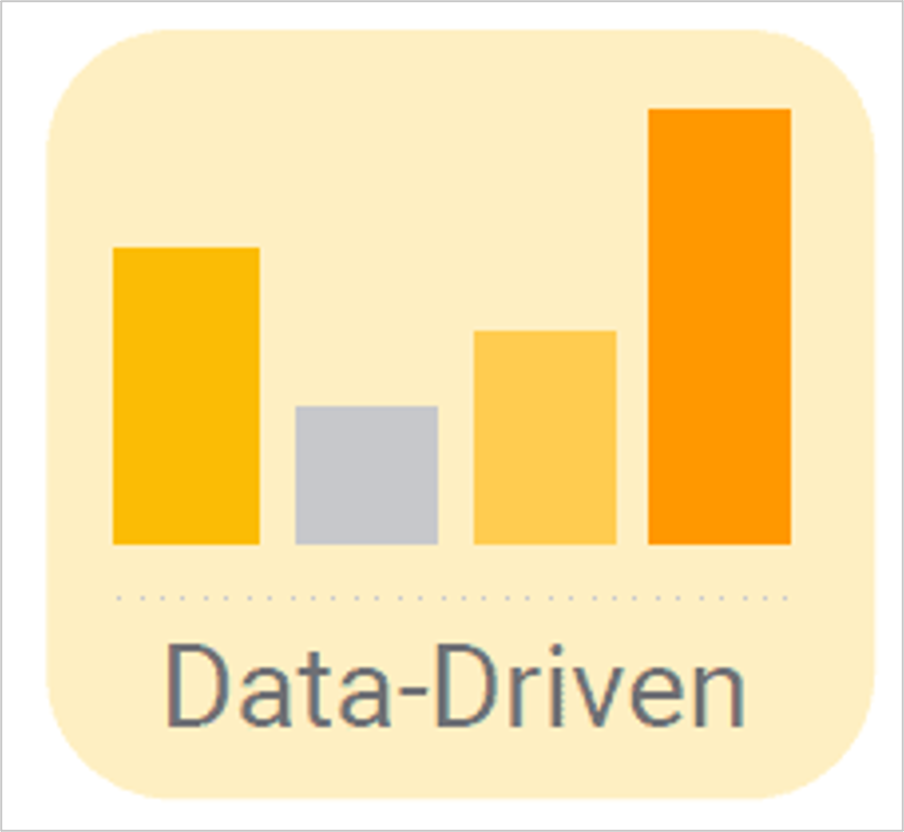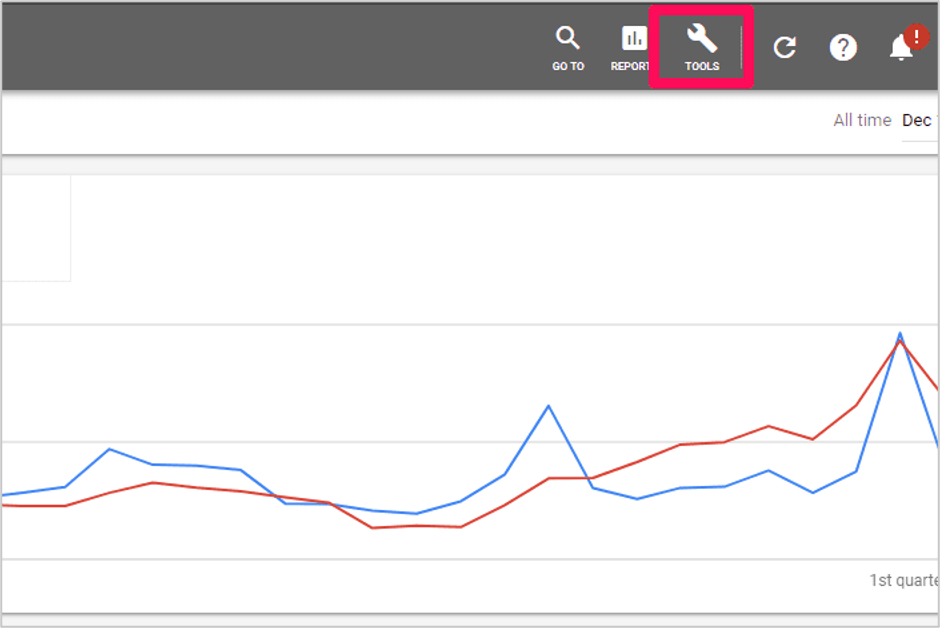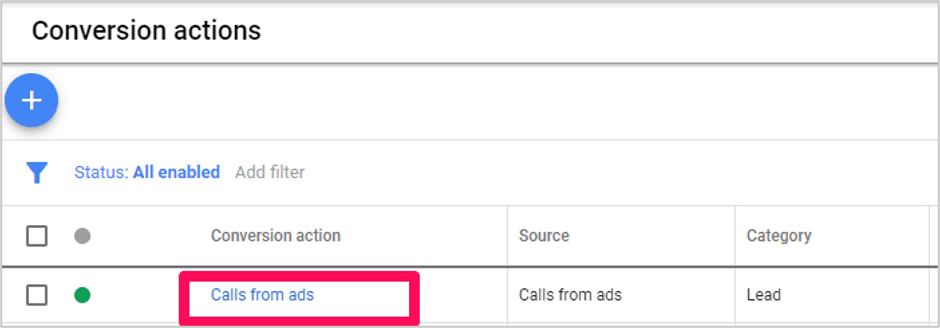Currently, there are six different Google Ads attribution models to choose from.
For those unfamiliar with attribution modeling, this can be a headache, to say the least.
Attribution modeling can help you better understand how, when, and why people converted on your ads on Google.
But choosing the wrong Google Ads Attribution Model can leave you with confusing, inaccurate data that can impact your future campaign success.
So, what kind of Google Ads attribution models are there? Which is best for a given goal? And… what are they in the first place? 🤔
That’s what we are here to answer.
Let’s dive into the Google Ads world of attribution modeling.
What are Google Ads Attribution Models? Why Does it Matter?
Attribution models in Google Ads aren’t unique to Google Ads alone.
In fact, Google Analytics has them too. Just about any analytics platform has different attribution modeling.
As a definition according to Google, attribution modeling is: “the rule, or set of rules, that determines how credit for sales and conversions is assigned to touchpoints in conversion paths.”
Simple enough right?
In even simpler terms: Attribution modeling is telling your analytics which channel or keyword to give credit for the sale/conversion.
So, why does any of this matter? Can’t we just say it was keyword X or channel Z that drove the sale?
Well, not really. It’s not that simple anymore, not in the era of inbound digital marketing.
It takes 7-13+ “touches,” otherwise known as engagements, with your business for a lead to convert.
This means that they could have visited your Instagram, your Twitter, your website, your landing page, your email, your remarketing ad, your RLSA, and more, all within the span of a month.
Now, do you start to see the problem?
Simply saying “oh yeah it was the twitter post that converted them” is just flat out wrong. Was it really the twitter post, or was it a combination of multiple channels, or a few in particular?
Attribution modeling seeks to give clearer data on what channels played the most important roles in converting a given prospect.
Now that you understand attribution models, what they are, and why they are important, let’s take a look at the current six you can choose from and select the best one for your Google Ads campaign goals.
A word of caution before we get onto the attribution models – with the myriad of different modeling choices and the ever-changing tech requirements involved, getting started can be daunting.
As we continue the path through a privacy-forward future, getting the measurement basics down is essential for all savvy marketers. Luckily, our partners at Google are giving our readers the chance to learn the secrets of measurement and attribution straight from the experts.
During our webinar on 5/13 at 10AM Pacific, Casey Lynn and Sebastian Nordström from Google will cover the steps you need to take to properly track and measure the actions users take in response to your marketing.
You’ll learn:
-
- Different ways of tracking conversions and how you can set this up for your business
- What attribution models are and which one fits your business
- How you can use conversion tracking and attribution to drive better bidding, targeting, and budget decisions
- How to access free resources that can help you better prepare for a privacy-forward future
Register now to discuss your most pressing questions live to our panel of Google experts. Can’t make it live? Don’t fret – the recording will be available to registrants after the event ends.
Now, onto the attribution models!
Google Ads Attribution Models Option #1:
Last-Click Model (Default Model)
When setting up a campaign on Google Ads, if you have never tweaked your attribution settings, you will always be running the last-click attribution model.
This is the default setting for Google Ads and Google Analytics.
Last-click is exactly what you’d think it is: giving credit for conversions/sales/ whatever your goal is to the last-clicked keyword or ad, etc.
For example, even if you have run 10 separate ads to the same person, if they finally convert on your display remarketing campaign, that display ad gets the credit for the sale.
Seems good enough, right? Well, not so fast. Last-click isn’t the whole story.
In fact, if you look at your Google Analytics, I bet you’d see tons of “Direct” conversions if you are using last-click modeling.
Why?
Because generally speaking, conversions with digital marketing work like this:
- Step 1:
User X finds you via unbranded search - Step 2:
User X reads the blog post that you shared on social - Step 3:
User X finds you again via unbranded search - Step 4:
User X types your direct URL into their browser and converts
While that’s obviously a highly abbreviated version of how typical buying journeys happen, the point remains the same:
When people are ready to convert, it’s usually when you have built some solid brand awareness. This leads people to type your link directly and convert.
But that’s not very helpful when you go back to analyze channel data. With last-click, it would show that your social and ads channels didn’t perform well.
But in reality, they played a huge role in the process of building the awareness that leads to the final sale!
Last-click simply doesn’t tell the whole story.
With that being said, it’s still not a hopeless attribution model. It’s still a good model if you are running simple ad campaigns on Google Ads without diverse remarketing lists.
If you like to keep campaigns simple and one-off, last-click can hold you over just fine. However, most advertisers will be better off picking one of the more advanced attribution models for a more accurate view—models that take into consideration multiple touch points throughout the customer journey.
Google Ads Attribution Models Option #2:
First-Click Model
Like the Last-Click model, First Click gives credit to the channel or keyword that first drove traffic to your site.
For example, let’s say you ran a standard search network campaign targeting a keyword for your industry.
You generate a click, but the user decides not to buy from you today. So, you run a remarketing ad to them via search again and drive another click. This time, they convert on a dime.
In your data and analytics, you will see credit given to the first keyword they engaged with.
The problems here become quickly apparent: first-click got their attention, sure, but it fundamentally didn’t work.
If it took them multiple keywords to convert, you know that first keyword that drove the click wasn’t high-intent.
So looking at data that tells you that keyword is driving massive conversion rates isn’t very accurate.
I like to reserve first click modeling for campaigns that are focused on awareness and top of the funnel engagement.
This is where first -click shines.
Why? It tells you that your first keyword or ad that was clicked was enticing enough for a user to engage with.
It shows you that:
- You targeted a good audience
- You had a compelling call to action
- Your keywords were on point
- You generated awareness
When it comes to measuring conversions? First-click is not the best.
But for brand awareness campaigns and testing top of the funnel engagement, first-click is very good.
Google Ads Attribution Models Option #3:
Linear Model
The linear model of attribution works by distributing the credit to every interaction a user takes before converting, equally.
For instance, if you ran a multi-level campaign focused on driving top of the funnel clicks via search, remarketing via display, and then remarketing via RLSAs, your conversion report would give equal credit to all three.
Linear modeling gives you a good idea of what channels and keywords worked and which didn’t.
If someone doesn’t click on your ad or keyword, it doesn’t get credit.
If you plan on running complex campaigns that take people directly from broad organic search terms to converting, a linear model is a good choice.
But these need to be longer campaigns designed to target bottom-of-the-funnel traffic off the bat.
For example, if you are selling SEO services, you’d want to start with a broad keyword.
Then, you’d want to remarket interested clicks to learn more on your website.
Lastly, you could then remarket them with RLSAs.
This three-step approach helps to bring your audience from awareness to conversion, with each step playing a huge role in the process.
In this case, linear modeling is very practical.
Google Ads Attribution Models Option #4:
Time Decay Model
The time decay model of attribution on Google Ads gives the most credit to actions that happened closer to a final conversion.
So if users took 7-13 touches to convert, but they were spread out amongst months of time, the last few touches they took would get the most credit.
The time decay model is great if your campaigns are often long and complex.
Selling eCommerce products online where you target keywords via Google Shopping wouldn’t find much benefit from time decay modeling, as sales are too quick.
But companies who require detailed education on their offering or even multiple consultations would benefit greatly from it.
Time decay can be a great model to help you understand how long your sales process is, too.
But for simple Google Ads campaigns, time decay is likely overkill.
Google Ads Attribution Models Option #5:
Position-Based Model
Position-based attribution modeling is one of my favorite methods for collecting good data.
Position-based modeling gives 40% of conversion credit to both the first and last touches and 20% to the remaining clicks on the journey.
This data is more concrete than first or last-click alone because it gives you insight into:
- Which first keyword or ad drew attention
- Which one closed the deal
- And which clicks/keywords in the middle supported their journey with information
Position-based attribution is a middle-ground, conservative model. Instead of giving direct credit to first or last keywords, you get 80% to both and 20% to the rest.
So, what position-based best for? Finding the right combination of awareness and closing.
A position-based model can help you know which combination of awareness keywords drove the first engagement and which keywords closed the sale.
Instead of linear modeling, it focuses more on the first and last keywords to do the heavy lifting.
Google Ads Attribution Models Option #6:
Data-Driven Model
The data-driven attribution model is a new addition from Google Ads. It uses Google machine learning technology to give credit to the most influencer keywords in the conversion process.
This new model is directly based on account performance.
As Google states: A data-driven approach takes the guesswork out of choosing a model.
It’s described as:
Sophisticated algorithms evaluate all the different paths in your account (both converting and non-converting) to determine which touchpoints are the most influential. Factors such as the number of ad interactions, the order of exposure and the creative assets used in each conversion path are all incorporated into results. Using a counterfactual approach, the algorithms contrast what actually happened with what could have happened to determine which ad clicks are most critical for a conversion.”
But this model isn’t for everyone. In fact, Google has requirements to become eligible for this type of attribution.
To use this model, you need a minimum of the following in 30 days:
- 3000 clicks
- 300 conversions
To keep using the model, you also have to be able to sustain the above numbers for 30 consecutive days.
That’s a whole lot of conversions and clicks.
Unless you are spending upwards of $2,000-$5,000 a month on Google Ads, you won’t have access to this model.
If you do have access, I highly recommend using it.
Google’s own testing has shown great data in favor of this model. Plus, it’s fully automated!
How to Select An Attribution Model in Google Ads
Now that you have a clear picture of the six different attribution models and what they can serve best for, it’s time to select a model based on your campaign.
To do this, head to your Google Ads dashboard.
From your account dashboard, select the tools tab.
Under measurement, select the conversions page:
To change the attribution settings for a campaign, you have to select individual conversion actions. From your list, select the right conversion action that you are using for a specific campaign:
From here, edit the campaign settings to access attribution modeling:
Lastly, select which attribution model you want. Here you will also be able to see if you are eligible for data-driven modeling.
Click done, hit save, and you are ready to use your new model!
Want to take attribution modeling a step further? Just like in Google Analytics, you can compare different models directly in Google Ads to see how your campaigns, ads, and keywords play a role in the buying process.
From your tool dashboard, select “Search attribution.”
On the left side, select attribution modeling and you can run attribution reports to test out each model individually to see how they impact your data.
This is a great step to help you decide which model is right for your overall campaign goals and business needs.
Everything you need for Google Ads attribution models
Google Ads attribution models appear complex on the surface, but once you break them down, they are really quite simple.
Attribution models are simply meant to help you better understand how and why a person converted.
It gives credit to different keywords and channels based on what model you use.
This can have big implications for your data and future campaign steps.
Choose the wrong model and you’ll be making poor decisions. Choose the right model and you’ll unlock some powerful data.
When push comes to shove, choose an attribution model that matches your campaign goals.
Use this guide as a reference for your future campaigns on what model to select.
Landing Page edits
Being able to properly track and attribute sales and leads is essential to maximizing the success of your marketing strategy. Unfortunately, with the myriad of different modeling choices and the ever-changing tech requirements involved – getting started can be daunting.
As we continue the path through a privacy-forward future, getting the measurement basics down is essential for all savvy marketers.
During this webinar, hosted by Casey Lynn and Sebastian Nordström from Google, we’ll cover the steps you need to take to properly track and measure the actions users take in response to your marketing.
You’ll learn:
- – Different ways of tracking conversions and how you can set this up for your business
- – What attribution models are and which one fits your business
- – How you can use conversion tracking and attribution to drive better bidding, targeting and budget decisions
- – How to access free resources that can help you better prepare for a privacy-forward future
Can’t make it live? Don’t fret – the recording will be available to registrants after the event ends.

















great post about google ads attribution model.
Thanks. I had not known about Google Ads attribution models before.
Great post. Thank you!
Thanks for this awesome google ads model. will definitely try these models.
I am really happy I have this information. Thanks!
Hi, I’m confused about your example “For instance, if you ran a multi-level campaign focused on driving top of the funnel clicks via search, remarketing via display, and then remarketing via RLSAs, your conversion report would give equal credit to all three.” Isn’t display excluded from the attribution modelling?
HUGE question, thanks for sharing. Glad we’re talking about this.
Wanted to throw in my $0.02:
The answer depends on a variety of factors. Your marketing mix, product or service offering, structure of your website, and checkout flow, among others, will determine what’s the best attribution model for your company.
In terms of Google Ads, though, it’s a lot simpler. There are a couple wrong answers: Last-Click and First-Click attribution. They provide extremely limited views of how your marketing efforts are working.
If you’re pushing a lot of branding elements and bottom-funnel marketing tactics, you may want to run a position-based model, which will add more weight at the beginning and end of the customer journey.
For brands with a very long consideration period, you may want to run a linear model and open up your attribution window, which will distribute weight more evenly along all of the Google Ads marketing touchpoints a user will hit. This lets you gain more insight into how to build a more holistic funnel.
Anyway, we blogged about this today, if you’d like to learn more: https://bit.ly/2Lwshh5
Hope that helps! See ya
Wich model would you use for a webinar signup ?
Good quick reference guide! Snappy. Thanks.
Is this true for display campaigns in gAds ? because there is a small print that notes : “Attribution model is only available for Search Network and Shopping ads on Google.com.”
Thanks for the wonderful Article